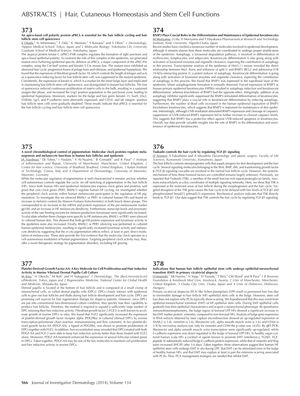Hair, Cutaneous Homeostasis and Stem Cell Functions
January 2014
in “Journal of Investigative Dermatology”

TLDR Proteins like aPKC and PDGF-AA, substances like adenosine and ATP, and adipose-derived stem cells all play important roles in hair growth and health, and could potentially be used to treat hair loss and skin conditions.
In 2013, multiple studies were conducted on hair growth, hair loss, and related factors. One study found that the protein aPKC is crucial for hair follicle cycling and stem cell quiescence, with its absence leading to abnormal hair cycles and progressive hair loss. Another study suggested that molecular clock proteins could be used to treat pigmentation disorders. Platelet-Derived Growth Factor-AA (PDGF-AA) was found to promote proliferation of dermal papilla cells (DPCs) and maintain their hair inductive activity, suggesting its potential in hair regeneration therapy for alopecia patients. Adenosine was found to promote hair follicle elongation and have strong anti-inflammatory effects, suggesting its potential use for hair growth disorders and related inflammatory conditions. Adipose-derived stem cells (ASC) were found to improve the quality of the epidermis and dermis, supporting their anti-aging effect and potential in skin regeneration. Adenosine triphosphate (ATP) was suggested as a good candidate for chronic hair loss treatment as it delayed hair follicle regression and prolonged the anagen phase duration. Significant differences were found in gene expression between balding and non-balding dermal papilla cells. A significant association was found between the TLR1 gene polymorphisms and the development of alopecia areata (AA) in the Korean population. Lastly, scalp follicles were found to express enzymes that synthesize prostaglandins E₂ and D₂, suggesting they may play a role in regulating hair growth.
View this study on jidonline.org →